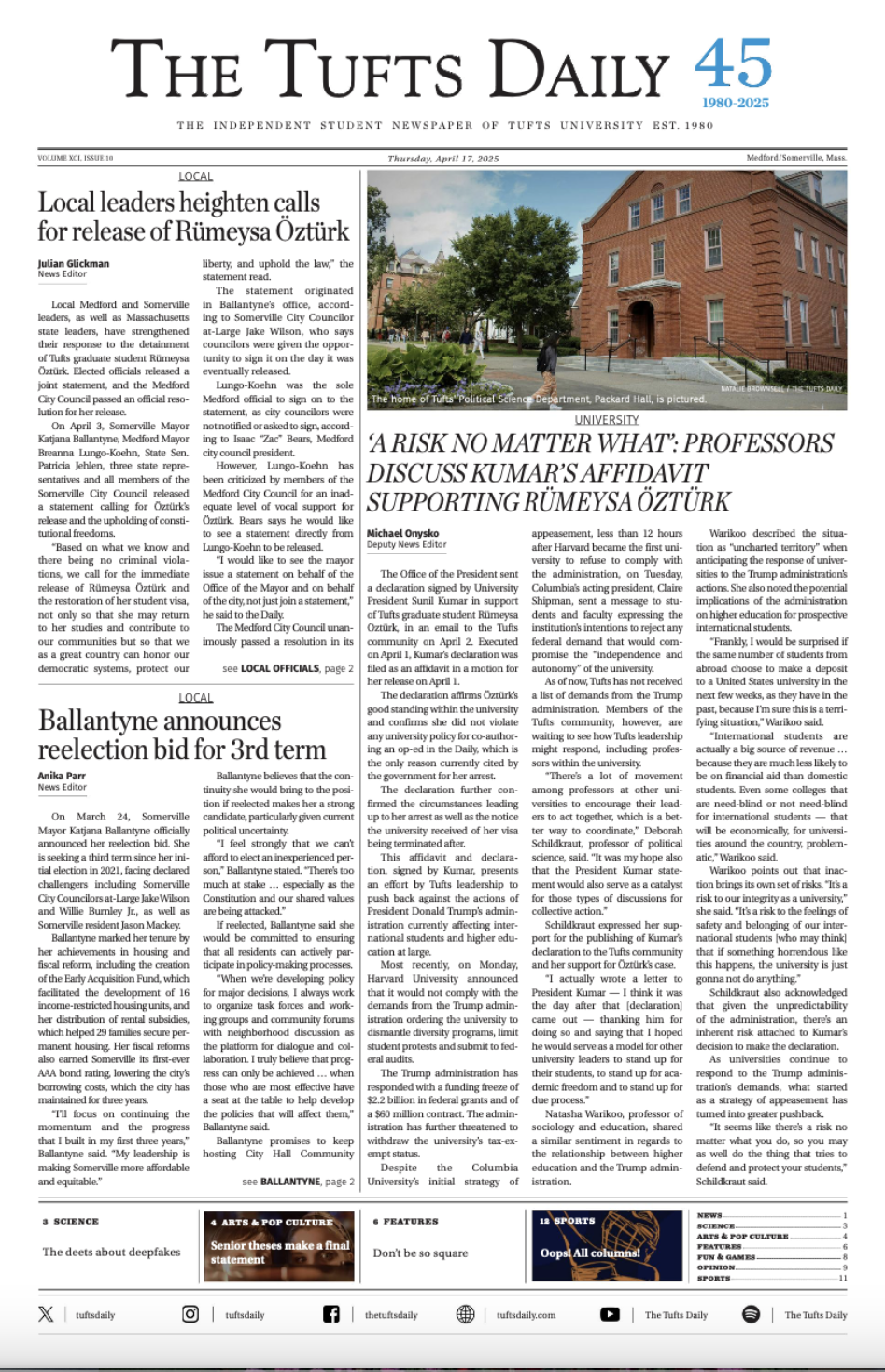Disclaimer: This article contains spoilers for “Inside Out 2” (2024).
In 2015, Pixar Animation Studios released “Inside Out,” an animated coming-of-age film centered around the mental landscape of Riley, a young girl who just moved from Minnesota to San Francisco. The protagonists are the personifications of Riley’s basic emotions: Joy, Fear, Anger, Disgust and Sadness; whichever emotion controls the central console determines what emotion Riley is feeling. The film was considered a massive success, grossing $858.8 million at the box office against its $175 million budget, cementing itself as one of Pixar’s most influential and successful children’s films. At the end of the movie, the emotions gather around a large button that appears on the central console labeled “Puberty” to which Joy dismisses, saying “Things couldn’t be better! After all, Riley’s 12 now. What could happen?”
In “Inside Out 2,” we find out. In the midst of now 13-year-old Riley’s entrance into high school, Joy and her friends are joined by several new emotions: Embarrassment, Envy, Ennui and the film’s central villain, Anxiety. Anxiety, short, wild-haired and orange, walks in physically carrying her emotional baggage. As Riley experiences puberty, the original emotions struggle to manage the new changes. Once joyful moments –– such as hanging out with her friends –– are now stressful as Anxiety takes control of the console, inhibiting Riley with so much anguish that at the film’s climax she experiences a full-on panic attack in the penalty box during a hockey game. When Joy and the other emotions take back control of the console, Anxiety relents, tearfully delivering perhaps the most cutting line of the film: “I was just trying to protect Riley.”
Teenage anxiety has reached record highs in the U.S., with an estimated 31.9% of adolescents suffering from some type of anxiety disorder. The condition is often accompanied by an overwhelming stigma that is not only a barrier to seeking treatment but also connotes a fear around the term –– simply acknowledging anxiety is too much. Many teens associate the term anxiety with the word “bad;” however, this false equivalence has only promoted shame and distrust surrounding the emotion. “Inside Out 2” directly tackles that misconception, dismantling the fearful rhetoric surrounding anxiety in a way that is accessible to teens and adults alike.
According to director Kelsey Mann, in early drafts of the film, Anxiety was supposed to morph into self-loathing. However, that left her “almost like a cardboard villain … [that] wasn’t very likable. And I didn’t understand why she was doing what she was doing.” It’s a good point. Why does anyone experience anxiety? What purpose do “bad” emotions serve while occupying space in our brains?
After speaking with several professionals and conducting some of his own research, Mann clarified something that ultimately became the most important facet of the film: Anxiety never had any malicious intent. In fact, she had the exact same motivation as Joy: keeping Riley safe.
“My job is to protect [Riley] from the scary stuff she can’t see,” she informs Joy during their first meeting. And at times, this is true. There are moments in the film where Anxiety is helpful, ensuring that Riley is prepared for a worst-case scenario. Other times, however, when she is given too much time at the console, she is debilitating and bears Riley down with intense amounts of stress and fear. But by pinpointing the shared goal between Joy and Anxiety, Mann has coupled an emotion seen as “good” with an emotion seen as “bad,” directly highlighting that emotions have no moral quality. At their core, they are simply there to help you.
Lisa Damour, a clinical psychologist and an advisor for the film, noted that uncomfortable emotions “help keep us safe [and] help to guide us.” The film aims to highlight that anxiety is not a villain or a ‘bad’ emotion. A little bit of anxiety is healthy.
Damour added that the franchise “treated those uncomfortable emotions as factory settings that are necessary to overall health.” Emotions and feelings are not villainized –– they are almost mechanical. Oftentimes, positive mental health is associated with constantly feeling good. But Damour challenges this notion, saying mental health is about “having feelings that fit what’s happening and then managing those feelings well.” It is not about getting rid of anxiety; it is about managing it. “Psychological distress, on its own, is not grounds for concern … it’s how you’ve survived to this point.”
At the end of the film, Anxiety attempts to once again manage the console and worry about the endless possibilities of the future before retreating to a chair, drinking some tea and thinking about an upcoming Spanish test instead. There is still space for her, even though she is not entirely managing the console, and it is an important moment that young adolescents visualize. Emotions have no moral quality; sometimes they are useful, and sometimes they are too much. Sometimes, they can help us win a spot on the hockey team, and sometimes they need to take a step back, sit down and drink some (anxie)tea.






